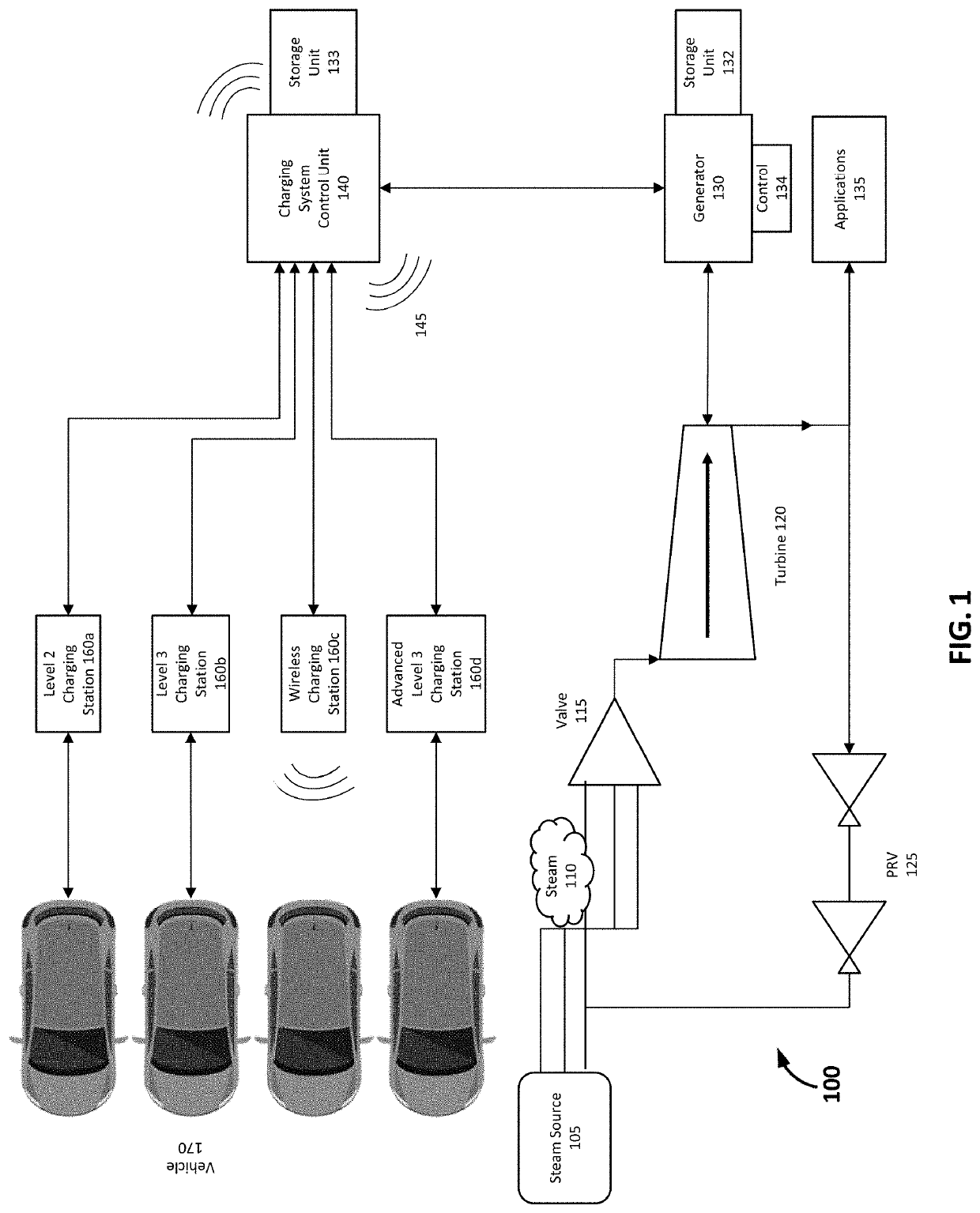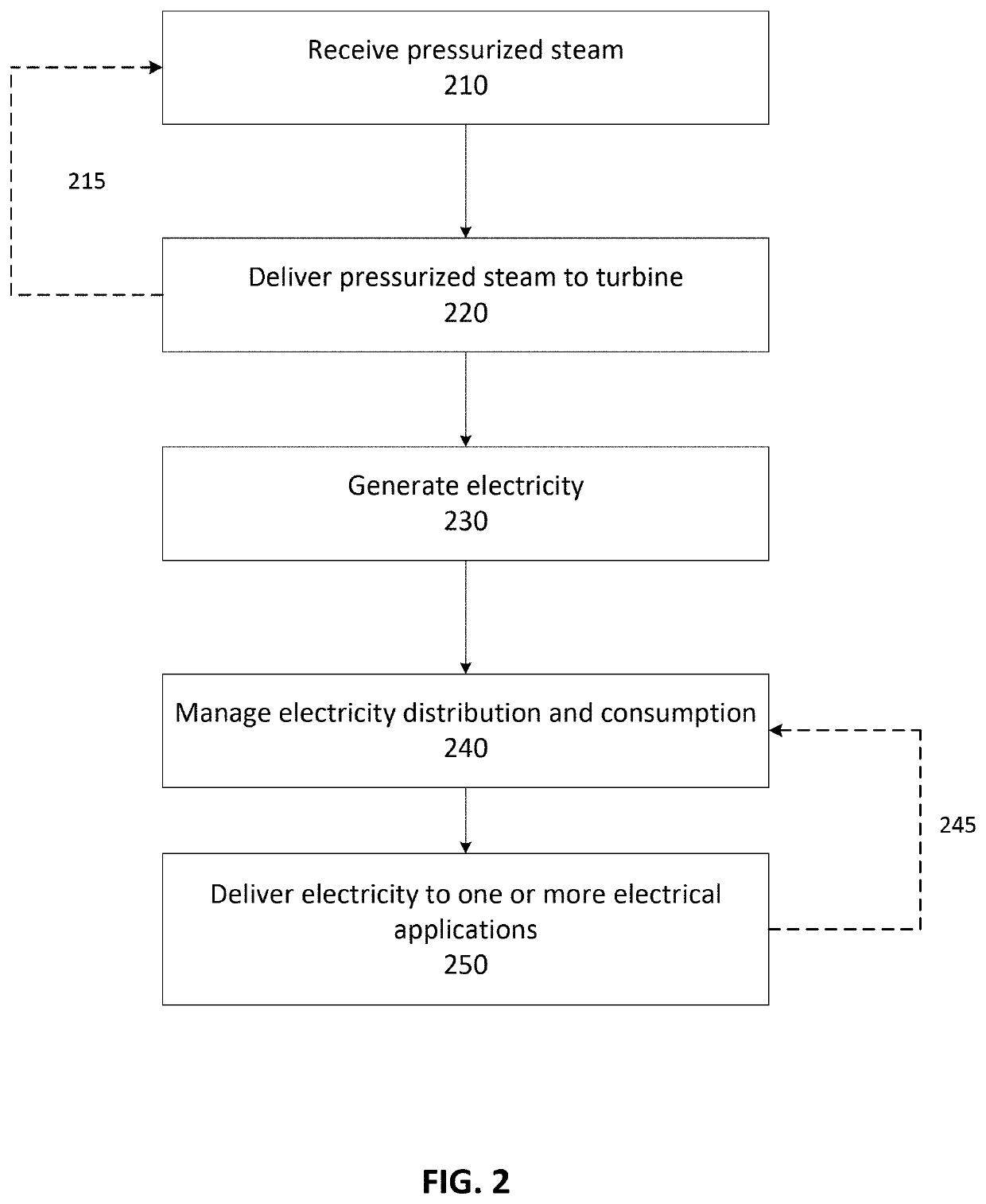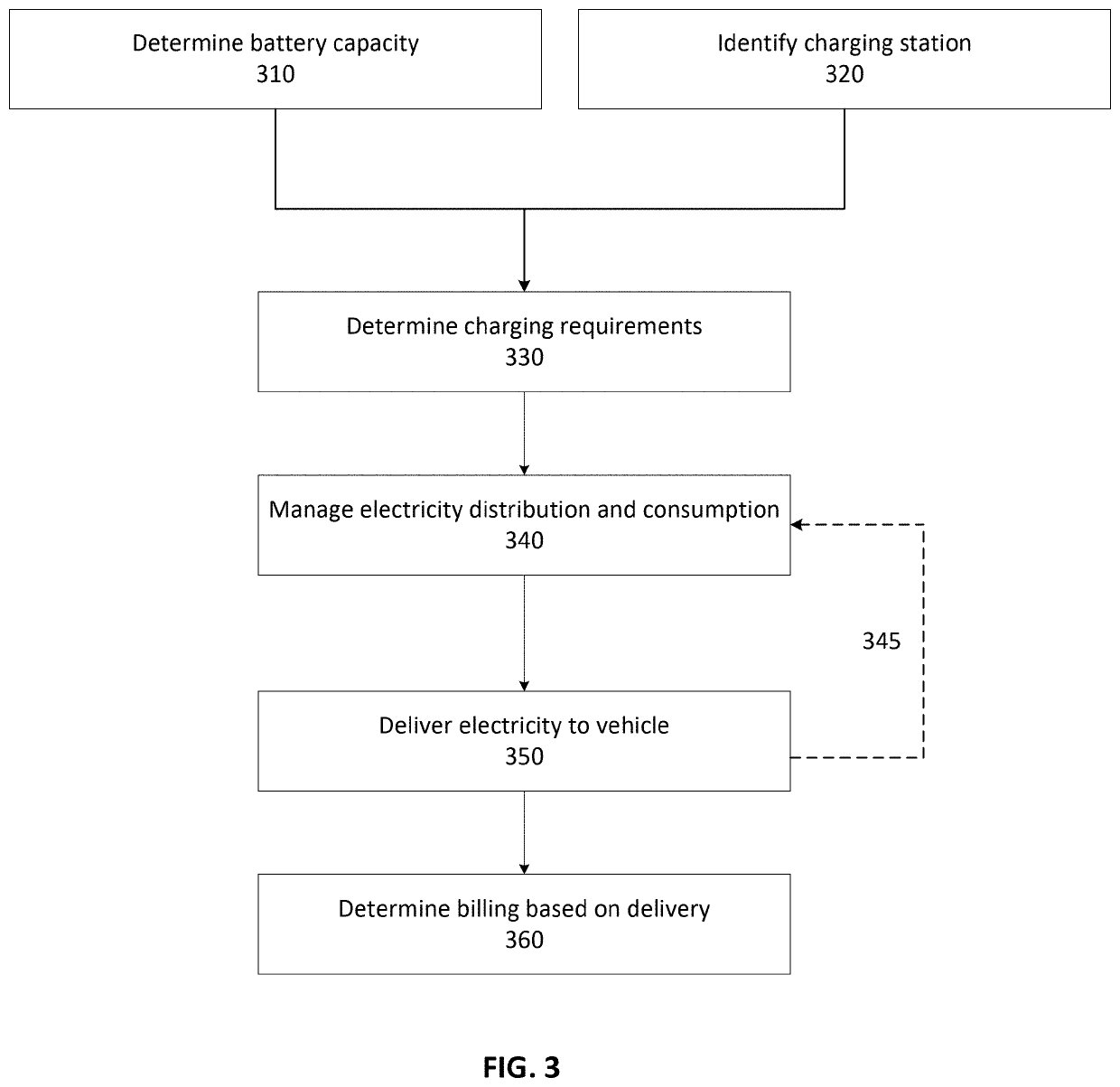Steam Powered Green Energy Electric Vehicle Charging System
a charging system and green energy technology, applied in the direction of machines/engines, instruments, transportation and packaging, etc., can solve the problems of high-voltage cable line installation, other items, installation costs, regulatory hurdles, etc., to reduce the reliance on fossil fuels
- Summary
- Abstract
- Description
- Claims
- Application Information
AI Technical Summary
Benefits of technology
Problems solved by technology
Method used
Image
Examples
Embodiment Construction
[0018]Various examples of the present invention described herein are generally directed to systems and methods for, among other things, utilizing steam power to charge electric vehicles. It will be understood that the provided examples are for purposes of clarity and understanding, and are not meant to limit or restrict the claimed subject matter or relevant portions of this invention in any manner.
[0019]According to an aspect of the present invention, Steam Sources may be utilized to produce electrical power for charging electric vehicles. Steam Sources, include, but are not limited to: 1) steam distribution networks that are utilized in many locations, especially urban locations such as the Con Ed steam distribution network in New York City, which provide a clean energy power source to businesses, including industrial plants and manufacturing facilities, as well as hospitals, schools and universities, residences and other venues; 2) steam generators that are located at large venue...
PUM
 Login to View More
Login to View More Abstract
Description
Claims
Application Information
 Login to View More
Login to View More - R&D
- Intellectual Property
- Life Sciences
- Materials
- Tech Scout
- Unparalleled Data Quality
- Higher Quality Content
- 60% Fewer Hallucinations
Browse by: Latest US Patents, China's latest patents, Technical Efficacy Thesaurus, Application Domain, Technology Topic, Popular Technical Reports.
© 2025 PatSnap. All rights reserved.Legal|Privacy policy|Modern Slavery Act Transparency Statement|Sitemap|About US| Contact US: help@patsnap.com



